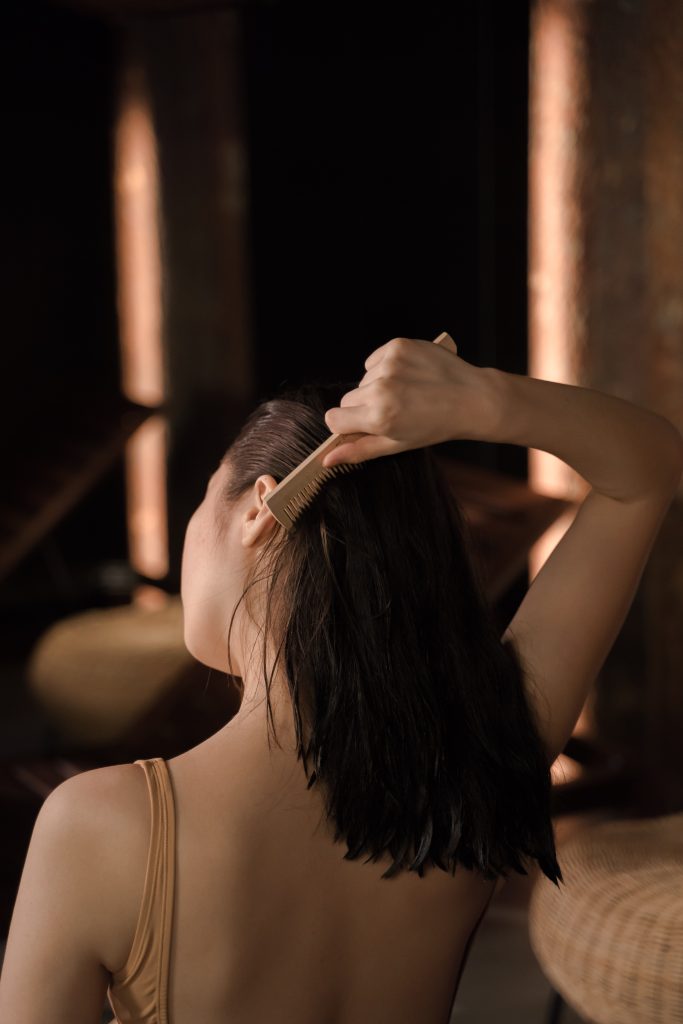What Is Hair Bleaching?
Bleaching hair involves applying bleach, which contains hydrogen peroxide, to strip away natural pigment from the hair strands. This lifts your base color to a lighter shade or removes it entirely to give platinum blonde hair.
When bleach reacts with the melanin in your hair, it makes hair cuticles swell and hair strands become porous. This allows the bleaching product to penetrate and alter your natural color.
How Do You Check Your Hair Before Bleaching It?
It is recommended that you do not wash your hair for 2 days before bleaching, the oils on your hair can reduce the damage of bleaching to your hair to a certain extent.
Check for chemical processing. If your hair has been chemically straightened, relaxed, or previously colored, especially recently, it may not tolerate bleach well. Bleach is very harsh on already processed hair.
Assess damage and dryness. Bleach thrives on healthy, undamaged hair. Feel for areas that are brittle, crunchy, gummy, or overly dry and porous. Those zones won’t hold up.
Look at current color and texture. Coarse, darker hair with warm undertones lifts and bleaches best. Fine, highlighted or color-treated hair will need lower volume bleach and babying.
Consider history. If you’ve bleached before and experienced a lot of damage, you may want to wait longer between sessions or do smaller touch ups.
Prepare for dryness and damage. Bleach is damaging, so deep conditioning treatments after are a must. Also use a bonding additive in the bleach to protect hair. Expect some dryness and breakage, trim split ends after.
Things to consider after bleaching hair
- Try a toner or gloss treatment. Salons offer toning services to get rid of brassiness. You can also buy at-home toners and glosses to use between salon visits. Apply according to instructions.
- Pay attention to the temperature of the water when you wash your hair. Warm water or a little cooler, otherwise the cuticle of the scalp is considered secondary damage.
- As much as possible to choose a mild neutral shampoo, such as amino acid cleansing, do not use scrubs or strong anti-dandruff oil control models.
- Get a professional toner or glaze. For stubborn brassiness, see a colorist for an in-salon toner or glaze for stronger, longer-lasting results.
- Try a toner or gloss treatment. Salons offer toning services to get rid of brassiness. You can also buy at-home toners and glosses to use between salon visits. Apply according to instructions.
Can you dye bleached hair?
- Bleached hair is more porous and prone to damage, so permanent dyes may cause further damage. Go for semi-permanent or demi-permanent dyes as gentler options.
- The lightened undertones from bleaching will affect the final color result. For example, bleached blonde hair dyed brown may turn out ashier or with more gray tones.
- Do a strand test first to see how the color develops before applying to your whole head.
- Fill the hair first if dyeing bleached hair back to your natural shade to ensure the color takes evenly. Use a colorfiller or gloss.
- Opt for a conditioning or bond-building hair color to replenish proteins and moisture lost during bleaching.
- Follow up with a deep conditioning hair mask after coloring to prevent dryness and breakage.
- Re-bleach any new growth first if wanting an all-over color, but this causes more damage.
- The color may fade more quickly from bleached hair than unprocessed hair. Expect to need touch ups more frequently.
- Consult a professional hair stylist if you have any doubts or concerns about how the color will take to your bleached hair.

